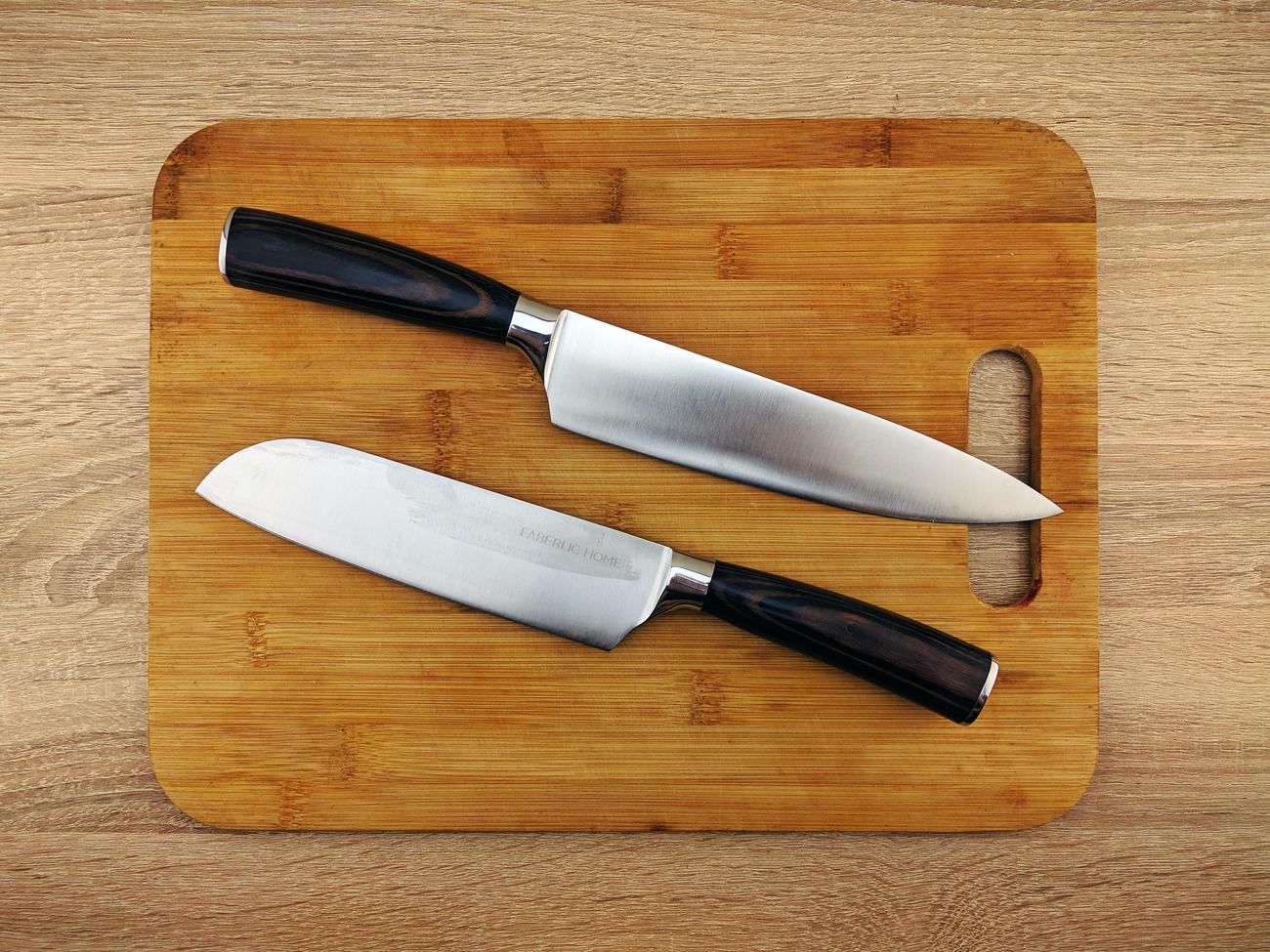Are you ready to dive into the captivating world of cutlery and explore the fascinating facts about chef knives? Look no further, as we unveil key insights that will leave you awestruck. In this article titled [Fascinating Facts: Uncovering Key Insights About Knives], we will embark on a journey that delves deep into the intricacies of these indispensable tools used by chefs and home cooks alike. As an experienced culinary writer and knife enthusiast, I am thrilled to share my extensive knowledge and passion for the art of cutlery. Prepare to be amazed as we unravel the hidden stories and secrets behind chef knives, revealing their history, practical applications, and the incredible craftsmanship that makes them an essential weapon in every cook’s arsenal.

Facts About Knives
As a culinary writer and knife enthusiast, I can’t help but be captivated by the fascinating realm of cutlery. Knives, one of humanity’s oldest tools, have an intriguing history that spans millions of years. Let’s embark on a journey together as we uncover key insights and explore remarkable facts about knives.
Knives: Tools Through Time
Knives have been an integral part of human society for centuries, with their origins dating back to at least 2.5 million years ago. From the most primitive forms crafted from rock and bone to the modern marvels of steel and titanium, the evolution of knives reflects our ceaseless pursuit of innovation. Today, we have an array of options when it comes to the materials used to create knives, each offering their unique set of qualities and benefits. With the right knife in hand, culinary artists and home cooks can transform ingredients with precision and finesse.
“Through the ages, knives have witnessed the progress of humanity, embodying the artistry of craftsmanship paired with the practicality of the kitchen.”
The Artistry of Blade Patterns
Knives are not only functional tools but also artistic expressions. They vary in blade patterns and styles depending on the maker and country of origin. From the distinctive Damascus steel with its mesmerizing wavy pattern to the elegant Santoku knife originating from Japan, each blade possesses its own story and purpose. Exploring the vast array of blade patterns and understanding their characteristics adds depth to our appreciation of knives as both functional and beautiful objects.
“Just as brushstrokes bring life to a canvass, blade patterns infuse character and craftsmanship into each knife, revealing the artisan’s skill and creativity.”
The Unique Sharpness of Obsidian Blades
While steel is commonly associated with knife blades, one extraordinary material stands out for its exceptional sharpness: obsidian. The volcanic glass, formed by rapidly cooling lava, possesses a keen edge that can actually cut between cells, unlike the tearing action of steel blades. This incredible feature highlights the superior sharpness of obsidian, making it a favored material for ancient civilizations. Though less prevalent in modern cutlery, the legacy of obsidian blades remains a testament to the ingenuity of our ancestors.
“Obsidian blades, honed to a remarkable edge, offer a glimpse into the ancient artistry of knife-making, reminding us of the sharpness and precision achieved through thoughtful craftsmanship.”
Now that we’ve journeyed through the captivating realm of knives, we can appreciate the vast history and diversity that lies within this essential tool. Whether it’s the enduring legacy of steel or the ancient allure of obsidian, each knife tells a story and carries with it the potential to unlock culinary wonders. With these facts about knives in mind, let us embrace the art of cutlery and elevate our culinary experiences with every slice and chop.
Image:
If relevant, you can insert an image of an assortment of knives to enhance visual appeal and engage the reader.
In the fascinating world of knives, understanding how to sharpen serrated knives is essential knowledge for any knife enthusiast. Dive into the secrets of maintaining these uniquely edged blades and unlocking their full potential. Discover the techniques that will make your serrated knives slice effortlessly through any task at hand. Learn more about sharpening serrated knives here: how to sharpen serrated knives.
But have you ever wondered why some knives, like gravity knives, are banned in certain areas? Uncover the reasons behind the legal restrictions and unravel the intriguing history surrounding gravity knives. Delve into the debate and explore the arguments that have sparked controversy. To gain a deeper understanding of the topic, explore why gravity knives are illegal: why are gravity knives illegal.
Immerse yourself in the captivating world of knives with these insights and facts about knives in our comprehensive article. From the artistry in their craftsmanship to the cultural significance they hold, knives have a rich and diverse heritage. Discover the versatility of these essential tools and dig deeper into their many applications. Explore the full article on facts about knives here.
Facts About Chef Knives
As a culinary writer and knife enthusiast, I’m thrilled to delve into the fascinating world of chef knives. These essential tools have been a part of human society for centuries and continue to play a crucial role in the culinary world. So, let’s uncover some key insights about these remarkable knives!
Understanding the Anatomy of a Chef Knife
To truly appreciate the marvel of a chef knife, it’s essential to understand its anatomy. A typical chef knife consists of three main parts: the blade, the handle, and the tang. The blade is the primary cutting edge, while the handle provides a comfortable grip. The tang, extending from the blade into the handle, ensures stability and balance. This unique composition allows chefs to maneuver their knives with precision and control.
“By understanding the anatomy of a chef knife, we can better appreciate its design and functionality.”
Different Types of Chef Knives for Different Cutting Tasks
Just as a painter needs different brushes for various strokes, a chef requires different knives for different cutting tasks. Each type of chef knife is designed to excel at specific culinary techniques. For instance, the versatile santoku knife offers superb slicing, dicing, and mincing capabilities. Meanwhile, a serrated bread knife ensures clean cuts through crusty loaves, while a boning knife’s narrow and flexible blade makes precision deboning a breeze.
“Having the right chef knife for the job can elevate your culinary skills and make cooking a joyous experience.”
The Importance of a Sharp Knife
When it comes to knives, sharpness is key. A sharp knife not only enhances efficiency but also ensures safety. Contrary to popular belief, a dull knife poses a greater risk of accidents due to its unpredictable movements. A sharp knife allows for controlled and precise cuts, reducing the chances of slippage and injury. So, remember to keep your chef knife properly sharpened to unleash its true potential.
“A sharp knife is not only a chef’s best friend but also a kitchen safety essential.”
The Art of Knife Maintenance
Proper knife maintenance is vital to prolonging their lifespan and performance. Here are a few important tips to keep your chef knives in top shape:
-
Hand wash your knives: Avoid subjecting your knives to the dishwasher, as the harsh detergents and high temperatures can cause damage. Instead, hand wash them with mild soap and warm water, followed by thorough drying.
-
Avoid soaking knives: While a good soak might work wonders for your tired feet, it’s not ideal for knives. Prolonged exposure to water can lead to rust or corrosion. So, always make sure to promptly dry your knives after washing.
-
Store your knives properly: Opt for a knife block, magnetic strip, or a knife roll to store your knives safely. Avoid tossing them into a drawer where they can rub against other utensils and lose their sharpness.
“Proper knife maintenance ensures longevity and keeps your knives performing at their best.”
The Balance of a Chef Knife
A well-balanced chef knife is a dream to work with. The balance refers to the distribution of weight along the knife’s length, allowing for comfortable handling and precise control. Ideally, the weight should be evenly distributed between the handle and the blade. This balance ensures stability during cutting tasks and reduces strain on the hand and wrist.
“A well-balanced chef knife is the secret ingredient to effortless and enjoyable cooking experiences.”
The Myth of Knife Sets
We often find ourselves drawn to enticing knife sets, only to realize later that we hardly use half the knives in the collection. Despite their allure, many knife sets contain excessive or unnecessary blades that end up gathering dust in our kitchens. Instead, invest in a few high-quality chef knives that are versatile enough to handle a wide range of cutting tasks. It’s quality over quantity when it comes to knives!
“Save kitchen space and money by choosing quality over quantity when it comes to chef knives.”
Now, armed with these intriguing facts about chef knives, you’re ready to take your culinary adventures to new heights. Embrace the art of knife skills and discover the joy of working with these remarkable tools. Happy cooking!
The Knife World: Avoiding Opinions Disguised as Facts
[youtube v=”l4hdjpSpibk”]
Introduction:
In the vast ocean of opinions and information overload present in the knife world, it can be challenging for beginners to navigate and make informed choices. Unfortunately, some individuals in the knife community present their views as absolute facts, which can discourage newcomers. In this article, we aim to shed light on these misleading opinions and guide new enthusiasts on how to approach such situations. We believe that everyone has different budgets and preferences, and it is crucial to make choices that align with personal comfort and experience.
Opinions vs. Facts:
As an SEO content writer and a long-time member of the knife community, I have come across various types of comments and opinions. While it is essential to consider different perspectives, it is equally important to identify opinions disguised as facts. Some individuals arrogantly parade their thoughts as irrefutable truths, belittling others for making different choices. This mindset can discourage beginners who are just starting to explore the knife world.
Starting from the Bottom:
When beginning their journey, many enthusiasts opt for budget-friendly options as they explore various knives. These choices allow them to better understand their personal preferences before venturing into more expensive territory. Sadly, some people criticize these decisions, claiming that knives made outside the United States are inherently inferior or that it is a terrible choice to spend money on them. Such comments can be disheartening for newcomers who are trying to find their footing in the community.
The truth is, where you begin is entirely up to you. Different budgets and levels of experience exist within the knife community. It is crucial to make purchases that align with your comfort and preferences. Starting with affordable, non-U.S. made knives opens doors to understanding what aspects you appreciate in a knife and helps you reach a point where you can appreciate more costly options. So, don’t let anyone tell you that your choice is wrong; it is merely a starting point on your journey.
Navigating Price Hikes:
Another area of contention arises when popular knife brands implement significant price increases. This alteration can frustrate many enthusiasts who feel that the prices no longer justify the product’s value. However, it is crucial to view these situations objectively and explore alternative options rather than succumbing to negativity.
Take the case of the Spyderco Shaman, which experienced a substantial price hike. Some individuals vent their anger by aggressively vocalizing their disapproval, as if they hold some moral high ground. Instead of getting tangled in their negativity, it is more productive to divert your attention to other available options within the brand. Spyderco offers a vast variety of models with varying prices, all of which can provide excellent performance and value.
Understanding Market Dynamics:
When a knife becomes highly popular, companies may seize the opportunity to increase its price based on market demand. While this practice may not be agreeable to all consumers, it is essential to comprehend that companies operate like any other business. It is not inherently evil or unethical but merely a reflection of market dynamics. So, don’t let price hikes ruin your experience; explore other options and find what suits you best.
Conclusion:
As an expert SEO content writer, I understand the confusion and frustration that newcomers face when diving into the knife world. It is crucial to differentiate between opinions and facts, disregarding views presented as absolute truths. Remember, each enthusiast has different budgets, preferences, and experiences, which shape their choices. Embrace your journey, starting with what you feel comfortable with, and explore the vast array of knives available. Never permit others to discourage you; instead, use their opinions as fuel to discover what makes the knife world so intriguing and enjoyable.

FAQ
Q: How old are knives?
A: Knives are one of the earliest tools used by humanity, dating back to at least 2.5 million years ago.
Q: What materials are knives made from?
A: Knives can be made from various materials such as rock, bone, flint, obsidian, bronze, copper, iron, steel, ceramics, and titanium.
Q: What are the different types of blades and styles of knives?
A: Knives have either fixed or folding blades and different blade patterns and styles depending on the maker and country of origin.
Q: How sharp are obsidian blades compared to steel knives?
A: Obsidian blades are so sharp that they can cut between cells rather than tear them, unlike steel knives.
Q: Are sharper knives safer to use?
A: Yes, sharper knives are actually safer to use as they require less force to cut through food, reducing the risk of accidents.
- Unveiling Bernhard Caesar Einstein’s Scientific Achievements: A Legacy in Engineering - July 15, 2025
- Uncover who is Jerry McSorley: CEO, Family Man, Business Success Story - July 15, 2025
- Discover Bernhard Caesar Einstein’s Scientific Contributions: Unveiling a Legacy Beyond Einstein - July 15, 2025















